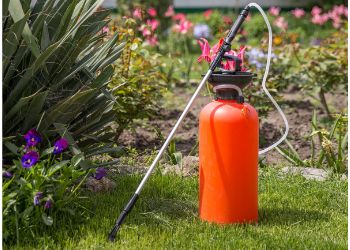Most gardeners know of or have heard of NPK ratios. I’ve had to learn this too with my roses. So what is the best N-P-K ratio for roses?
I’m going over some of the main points in this article, starting with a summary to get you a quick answer.
The best NPK ratio for roses is ideally higher than other plants as roses tend to be hungry plants. However, even a general-purpose fertilizer helps roses to improve their growth and blooms. Anything from a 4-8-4, through to an 18-24-16 can be used. Some fertilizers are specialized for roses.
That’s the fast answer, but we perhaps need to go a little more in-depth with this. So if you’re looking for more guidance, then read on.
Best NPK ratio for roses
In all rose categories, roses are heavy feeders and so fertilizing them regularly is an essential part of rose care.
Along with a variety of micronutrients like iron, calcium, and magnesium, roses also require the three macronutrients nitrogen (N) for foliage growth, phosphorus (P) for root growth, and potassium (K) for flower creation.
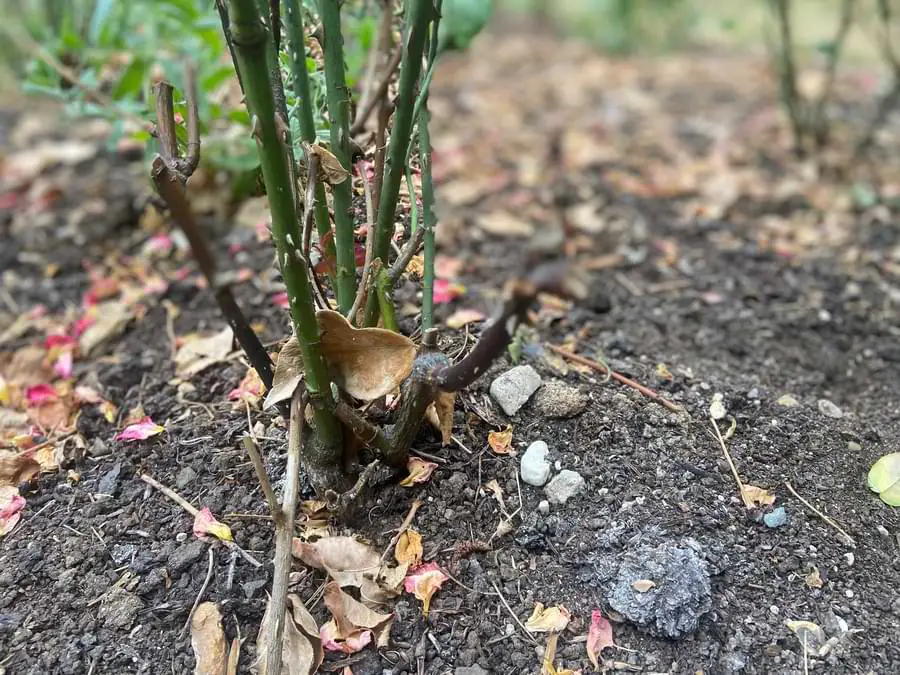
As you can see from my rose plant image, this rose has suffered some dieback in the past. I find getting the NPK ratio correct can help prevent this to a degree. But it doesn’t mean you’ll never have these issues. It’s more important how you deal with them when they arise.
For almost all types of roses, below you’ll find a detailed guide on the fertilizer ratio for roses, the npk ratio for roses, and levels within fertilizer for roses.
When and How to Fertilize Roses
The type of rose, hybrid tea roses, for example, often require more nutrients than shrub roses. And the length of the growing season determines when and how much to fertilize new roses.
Along those lines, here are some recommendations to follow:
- When the first rose plant leaves begin to show and there is no longer a threat of a severe spring frost, then begin the fertilizer process.
The fertilizing plan should then be determined by how frequently and for how long the rose is blooming. - As a general guideline, fertilize your roses after each bloom cycle but progressively cut back on the fertilizer by half each time.
Stop fertilizing six to eight weeks before the earliest anticipated frost date in your area. You don’t want fragile new blooms in the late summer that will be harmed by cold weather in the fall and winter. - You can fertilize the roses once they have entered their dormant period. The plants won’t be harmed by fertilizer at this point, but it will prepare them for the following spring.
Roses grown in containers could require more frequent fertilization than roses grown in your rose bed.
Fertilize them at the previously mentioned intervals and whenever the foliage begins to appear a little chlorotic. Simply put, that’s the yellowing of leaves. which is a sign of nutritional deficiency. - Use a calendar or a task reminder tool to keep track of when you fertilize your roses. Yes, I’ve found that growing roses, and gardening in general, can get this geeky!
Using inorganic fertilizers for roses
There are specialized rose plant feeds with an N-P-K ratio of 18-24-16 that are designed to meet the greater phosphorus requirements of roses.
However, you are not required to buy any specific fertilizer for your roses. A general complete fertilizer with a high phosphorus ratio, like 5-10-5, 4-8-4, or 4-12-4 can be used too.
So here’s a table outlining what you can use. None of these are necessarily good or bad, they will just provide different levels.
While these are the recommended amounts, these are just a guide. I use a fertilizer that is aimed at roses, but it also doesn’t have these higher levels.
| Nitrogen | Phosphorous | Potassium | |
|---|---|---|---|
| Fertilizer for roses | 18 | 24 | 16 |
| General fertilizer | 5 | 10 | 5 |
| General fertilizer | 4 | 8 | 4 |
| General fertilizer | 4 | 12 | 4 |
If you use a generic fertilizer, it doesn’t mean your roses will not bloom or will die. You’re just applying less of that particular nutrient. But you’re likely adding other treatments with your roses too. There is no exact science to the amount, roses just generally like higher NPK values.
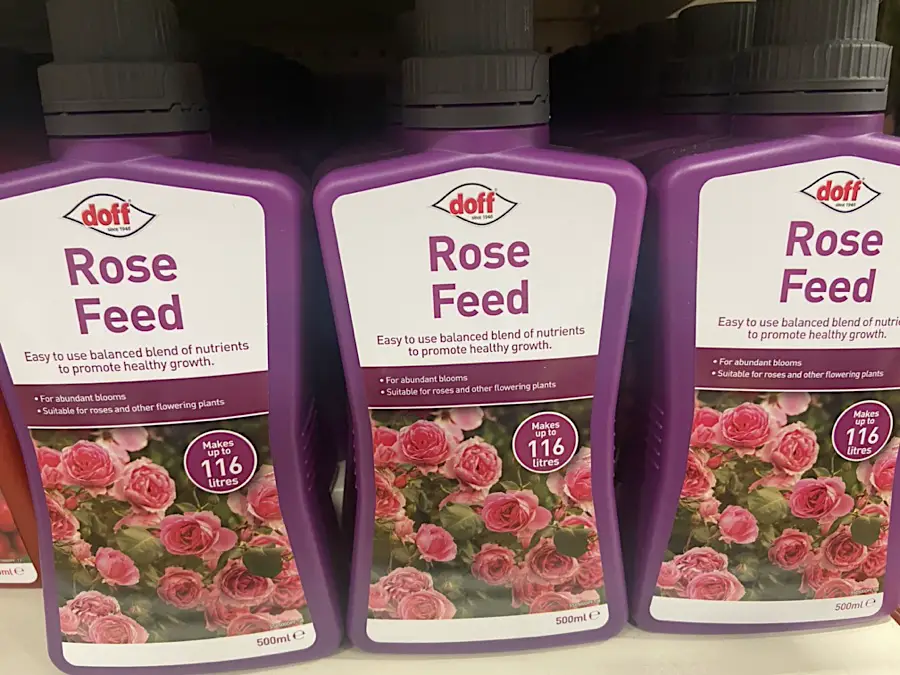
Follow the instructions on the fertilizer label for the amount. In general, half a cup of complete fertilizer is the standard recommendation for each plant.
Avoid piling inorganic fertilizer up on dry soil because it can burn, as it’s more concentrated than organic fertilizer.
Instead, sprinkle the fertilizer all around the rose plant before lightly raking it into the damp soil. After applying fertilizer, make sure to thoroughly water the roses plants and keep the fertilizer away from the canes and the graft union.
Using organic fertilizers for roses
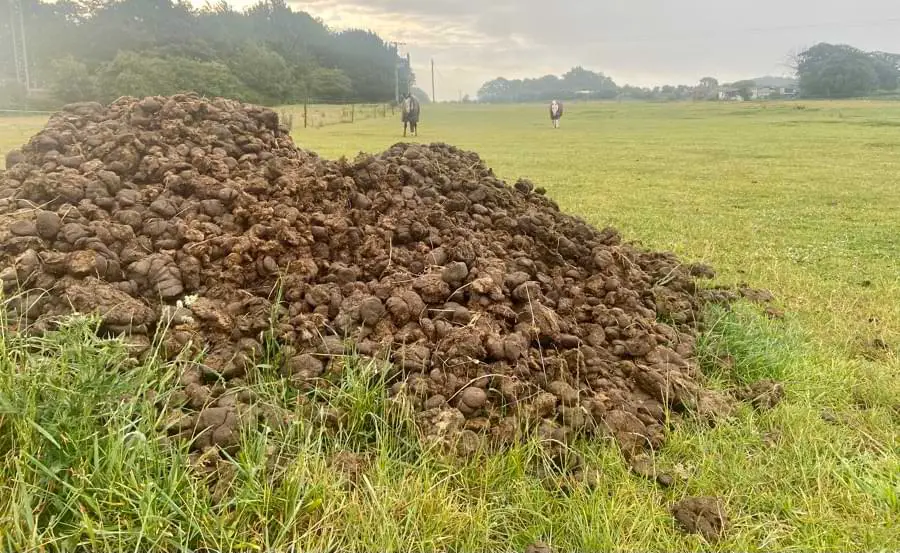
Aged or composted manure is a great source of all three macronutrients, N, P, and K …when mixed into the soil two to three inches deep.
Always make sure the manure is “seasoned,” or at least, not new. Because the higher nitrogen content found in new manure will harm your roses by causing fertilizer burn.
Phosphorus is added to the soil through bone meal. Mix it thoroughly with the soil to prevent wildlife from being drawn in by the smell and ripping up the ground, as well as to ensure that water does not easily penetrate the soil.
Nutrients that are important for roses
Nitrogen (N) – is necessary for roses’ growth and development.
Phosphorus (P) – has an impact on how the root system and flower buds develop.
Potassium (K) – facilitates the growth of high-quality blooms, aids in the lignification of shoots at the end of the growing season to prevent shrubs from freezing in the winter, and boosts plant tolerance to bad weather (particularly water shortages) and disease.
Sulfur (S) – deficiency inhibits plant growth and results in aberrant flowering behavior.
Magnesium (Mg) and iron (Fe) – are the minerals responsible for the vibrant green color of plants.
Iron (Fe) – is also a mineral responsible for the green color of plants.
Manganese (Mn) – impacts the roses’ photosynthesis process, respiration, as well as other metabolic processes that will influence the roses’ health
Boron (B) – This mineral helps determine the healthy development of your rose’s flowers. A deficiency of boron can produce distorted or prematurely drooping flowers as soon as the bud opens.
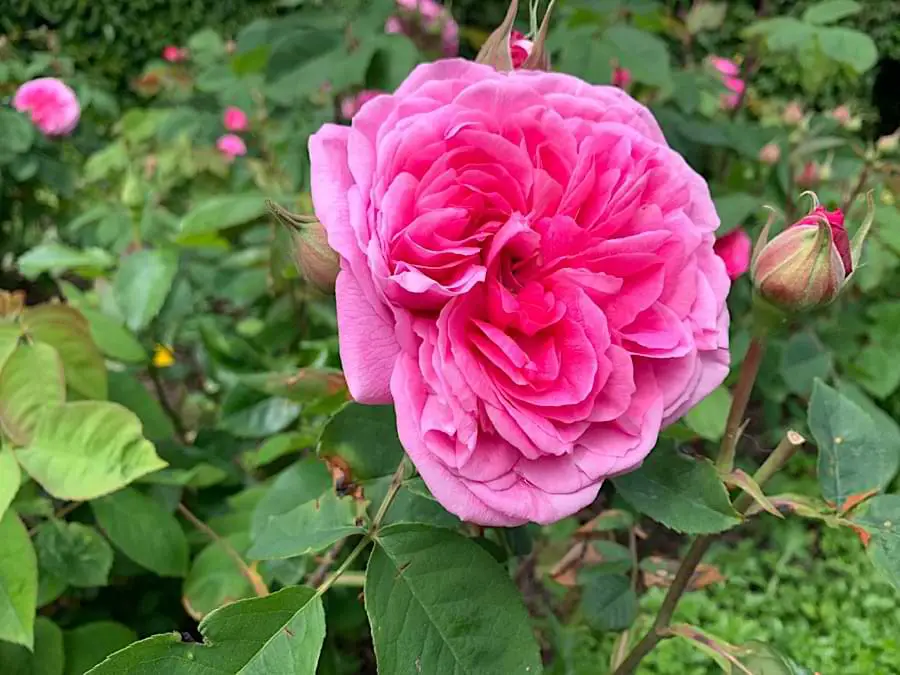
To be effectively utilized by roses, all nutrients in fertilizers should be present in the proper ratios to one another.
The ideal npk ratio for roses is a balance of nitrogen, phosphorus, and potassium. For roses, the ideal ratio is 1: 0.8: 1.8.
The temperature and soil structure are both improved by the use of manure or compost. The use of multi-component mineral fertilizers, which have all the necessary components in the right ratios, is a more effective and efficient treatment for roses.
Additionally, some of these fertilizers release micro-and macronutrients to the substrate gradually over an extended period.
By doing this, excessive soil salinity is avoided, which could harm plants. The health of shrubs and an abundance of yearly blossoming are guaranteed by the use of appropriate fertilizers.
Soil analysis
Use an at-home soil testing kit like this one on Amazon. or send a soil sample to a lab for analysis if you wish to prevent over-or under-fertilizing.
The tests identify the nutrients that the soil is deficient in the most, thus making it simpler to choose the right fertilizer dosage.
A complete rose fertilizer with nitrogen, phosphorus, and potassium is typically the best option for roses.
However, nutrient deficiencies of one nutrient may be more severe than those of the others, and the gardener can then choose the fertilizer ratio to make up for the shortage.
A gardener should select a complete fertilizer with a greater phosphorus ratio, such as a 5-10-5 ratio fertilizer if a soil test shows that the soil has very low phosphorus levels.
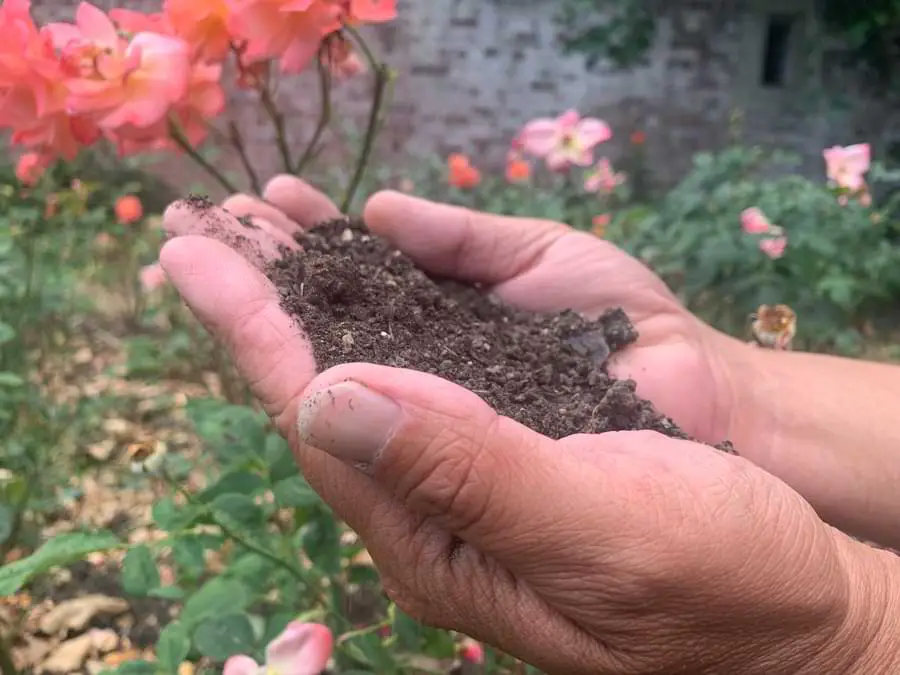
Fertilizer ratio for roses – Application
In general, the percentage of nitrogen by weight is indicated by the first number in the fertilizer ratio.
For instance, 3 parts nitrogen will be present in 100 parts of 3-3-3 fertilizer. Similar to this, 10 pounds of nitrogen will be present in 100 pounds of 10-10-10 fertilizer. Use the ratio to calculate the correct amount of fertilizer to apply to deliver the proper amount of nitrogen …after selecting a fertilizer ratio based on the demands of the soil.
Best NPK ratio for roses ~ More roses help! 🌹
I hope this has helped you to understand the best NPK ratio for roses. For me, the key takeaway from this is that there are no hard and fast rules on the right NPK ratio for roses. If you add fertilizer at all then you are already giving your roses some benefit. That’s why I tend to use general varieties a lot.
So rightly or wrongly, my advice is not to get too hung up on the numbers and ratios, and just provide something, any help will enable your roses to bloom their best.
Check out my other rose articles, and also my tools and resources page.

Hi, I’m Michael. My passion for roses was sparked a few years ago after visiting a dedicated community rose garden. So Rosehow.com represents my take, my learnings, and my help for anyone looking to grow, be proud of, and harvest roses.

